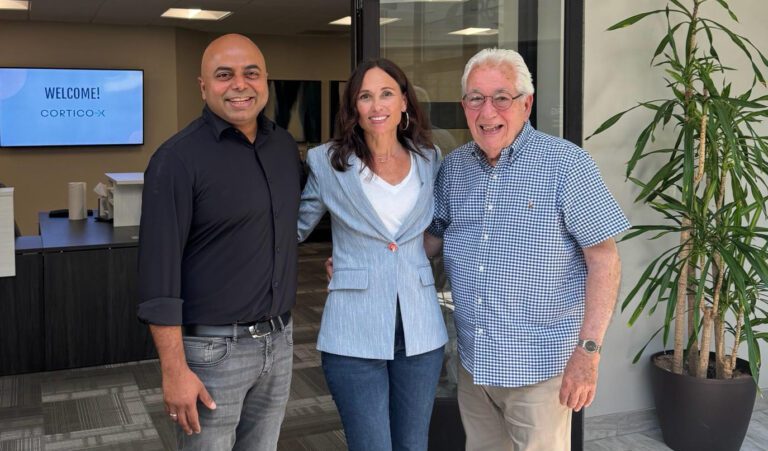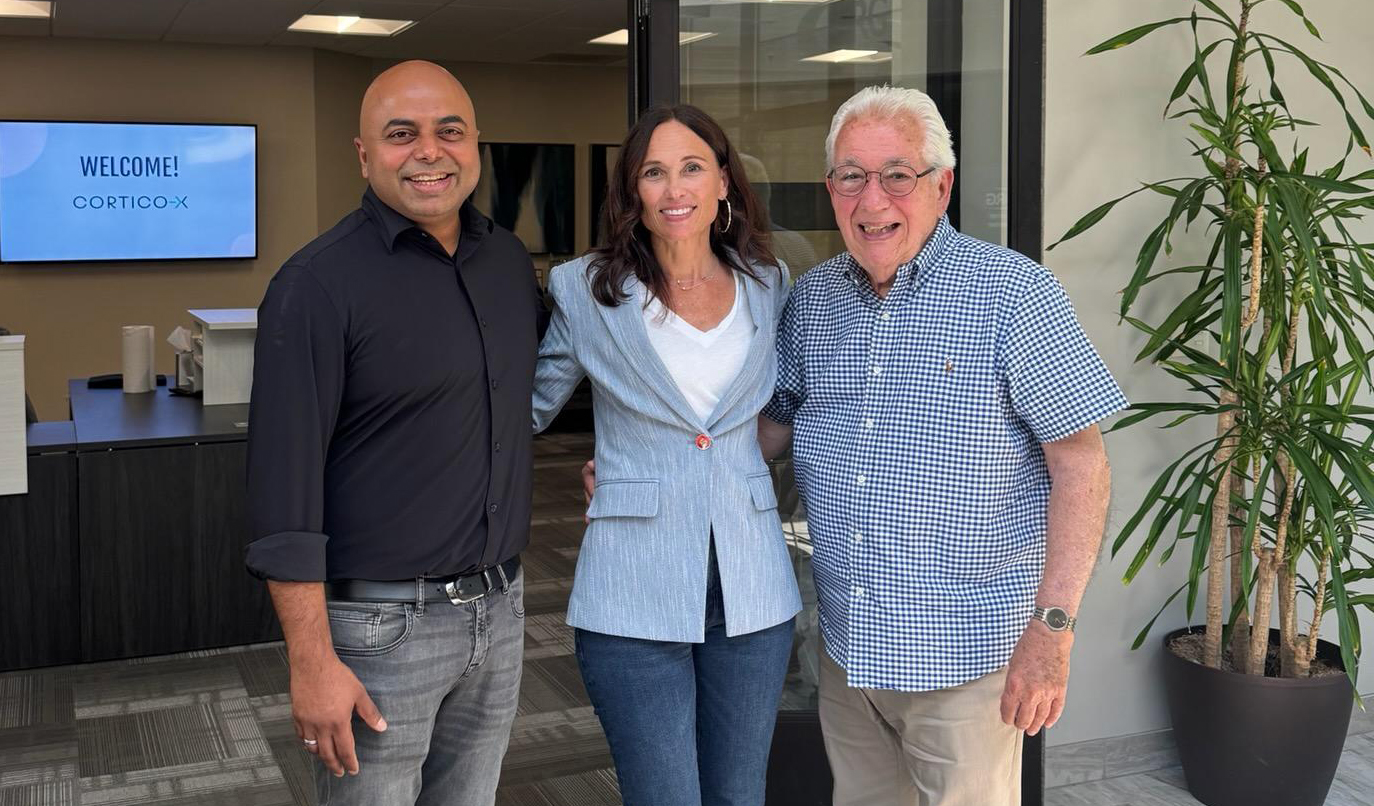Imagine navigating today’s digital landscape with a Nokia flip phone from the early 2000s. Frustrating, right? As digital consumers, we’ve developed sophisticated expectations for seamless, intuitive experiences. Yet as employees, we’ve somehow accepted outdated HR processes and clunky tools that would never survive in the consumer marketplace. HR professionals aren’t to blame—they’re doing their best with what they know and resources available—but this disconnect has unfairly earned HR a negative reputation. In fact, 89% of employees believe that IT and HR could work better together to improve the digital employee experience.
Just as smartphones revolutionized how we communicate, it’s time for HR to undergo a similar transformation paradigm shift poised to redefine human resources management for the digital age.
Francis Brown, Product Development Manager at Alaska Airlines, observes, “At the heart of every product person, there’s a desire to make someone’s life easier or simpler.”
The Employee as the Customer
In this new paradigm, we view employees not merely as workers, but as discerning customers of HR services. A product expert examining traditional HR processes would immediately spot the disconnects—they would push beyond single-point solutions toward integrated product suites that work seamlessly across the employee lifecycle.
Their questions would challenge conventional thinking:
- “Who is our primary user and what problem are we solving for them?”
- “How do these separate HR functions connect into a unified employee experience?”
- “Where can we eliminate friction between systems?”
Instead of focusing solely on compliance and administration, HR begins to think in terms of user journeys, ecosystem design, and platform integrations that create a seamless experience. The goal shifts from building isolated HR features to crafting comprehensive product suites that employees intuitively navigate, value, and dare I say…enjoy?.
HR’s Product Suite
Today’s traditional HR digital ecosystem operates like a fragmented collection of legacy systems—clunky intranets, disconnected spreadsheets, and paper forms that require multiple handoffs and duplicative data entry between departments. Imagine instead your HR processes as a suite of intuitive apps on a smartphone, each meticulously designed to address specific employee needs:
- Where once new hires navigated a maze of paperwork, an Onboarding App would streamline the entire experience through digital workflows and checklists.
- Rather than dreading annual reviews, employees would engage with a Performance Booster facilitating continuous feedback and growth.
- Instead of generic training catalogs, a Learning Lab would deliver personalized professional development pathways.
- An outdated job posting board would evolve into a sophisticated Career Navigator guiding employees through internal mobility opportunities.
What truly distinguishes this service and product mindset is its perfect timing—anticipating exactly what employees need precisely when they need it. Unlike traditional HR that bombards new hires with information before they can absorb it or offers career guidance only after an employee has already decided to leave, service and product-oriented HR anticipates user needs at their most critical moments.
It’s the difference between receiving all benefits information on day one versus getting relevant healthcare options when you’re adding a dependent, or between standardized management training versus receiving coaching tips right after becoming a team lead. Each of these “products” is crafted with the employee experience at its core—not merely automating existing processes but fundamentally reimagining them to solve real problems at the exact moment of need, adding tangible value through contextual relevance and perfect timing.
Agile HR: Sprinting Towards Better Employee Experiences
Reid Hoffman, co-founder of LinkedIn, famously stated, “If you are not embarrassed by the first version of your product, you’ve launched too late.”
While Reid Hoffman’s quote perfectly captures the agile mindset, traditional HR has understandably approached change with caution.
Facebook’s infamous mantra of “Move fast and break things” represents the ultimate red flag for HR professionals, whose domain requires careful stewardship of people practices and compliance requirements. In a function where legal considerations and policy adherence are paramount, the concept of “learning through iteration” rather than “failure” offers a more constructive framework.
HR might instead embrace a more fitting motto: “Design deliberately, improve continuously.” This approach allows HR to develop carefully scoped Controlled Learning Environments (CLEs)—similar to MVPs but with appropriate guardrails—for new initiatives. By launching these structured pilots with select employee groups, gathering detailed feedback, and making evidence-based refinements, HR creates a governance-friendly approach to innovation.
This method maintains necessary compliance while fostering continuous improvement through regular “learning cycles.” The focus shifts from “failing fast” to “learning quickly”—a distinction that honors HR’s responsibility as organizational stewards while still enabling meaningful progress.
There is no better time than now for HR to lace up its running shoes and join the agile race, bringing along its expertise in risk management as a valuable asset rather than a limitation.
Service vs Product Mindset: Cultivating Dual Mindsets
At Cortico-X, we help organizations develop dual mindsets—viewing HR both as a service provider and as a product developer. But why does HR need both mindsets?
The service mindset keeps HR human-centered. It enables HR to respond to individual employee needs with empathy, adapt quickly to changing circumstances, and build trust through consistent support. When HR approaches challenges with a service lens, they create personalized experiences that demonstrate a deep understanding of what employees actually need, not just what processes dictate.
The product mindset makes HR scalable and measurable. It transforms HR from reactive problem-solving to proactive experience design. This perspective helps standardize processes without sacrificing quality, focuses on creating intuitive user experiences, and enables continuous improvement through testing and iteration. For HR, adopting product thinking means measuring success through employee adoption and satisfaction, not just process completion.
Cortico-X helps HR teams develop these complementary mindsets that enable teams to switch between service and product thinking as needed, and provide frameworks that help leaders make intentional choices about when to standardize and when to personalize HR solutions.
Practical Application Examples:
| Application | Service Lens | Product Lens |
|---|---|---|
| Recruitment Process | How candidates experience interactions with recruiters | How the application system functions and delivers consistent outcomes |
| Employee Onboarding process | How personally supported new hires feel during transition | How systematized and repeatable the onboarding process is |
| Performance management | Quality of coaching conversations and manager support | Consistency and usability of review tools and frameworks |
Practical Tips for HR Professionals
To embark on this transformative journey, HR professionals can start small by choosing one HR process to redesign using this way of thinking. While still gathering user feedback through employee surveys, HR can leverage other ways to capture valuable insights passively such as:
- Digital experience monitoring through behavioral analytics and micro feedback touchpoints
- Conversation data gathered from support ticket analysis and chat interactions
- Unstructured feedback channels that are “always on” and monitoring of internal platforms and collaboration tools
Next, create cross-functional teams that engage shared services and others departments in HR initiatives to bring fresh perspectives. Adopting agile tools like Kanban boards to visualize HR work and prioritize tasks can streamline operations. Embracing continuous learning by investing in product management, UX, and Design Thinking training for HR staff is essential for long-term success. Remember, Rome wasn’t built in a day, and neither will your HR product suite – but every step counts.
Future Outlook
“Every screen, every panel, every interaction you have will be informed and improved and made more intelligent by AI.”
– Josh Bersin
As HR continues to evolve, AI will serve not as a replacement but as a thoughtful collaborator in our human-centered mission. Rather than dystopian scenarios where machines “take over HR,” we can envision a more measured future where AI augments human capabilities—helping HR professionals work smarter, not harder.
AI is revolutionizing HR processes, offering significant time and cost savings while enabling HR professionals to focus on more strategic initiatives. Generative AI, for example, can help companies reduce HR labor time by an average of 15-20% through automation and augmentation. This efficiency gain varies across different HR roles:
- HR business partners can have an influence in saving employee time
- Talent acquisition teams can reduce process time to get talent to work sooner
- HR operations teams can achieve savings within their own team so they can work on more strategic efforts
By embracing AI-driven solutions and focusing on actionable metrics, HR leaders can drive their organizations to sustainable success, solidifying HR’s position as a strategic partner in organizational growth.
Conclusion
This balanced partnership between technology and human expertise exemplifies the power of dual mindsets in action. When HR professionals embrace both service and product thinking, they create a multiplier effect—the service mindset ensures empathy and human connection remain central, while the product mindset drives scalability and innovation through AI. The future of HR isn’t about surrendering our humanity to automation but rather using these tools to express our humanity more fully through well-designed, empathetic experiences. Organizations that cultivate both mindsets will see technology become the canvas on which they paint more meaningful employee journeys—with humans always holding the brush.
Are you and your team looking for a partner to help you achieve a future-forward HR org? Reach out to us to discuss ways we can partner!

Adde Morgan
is a Principal at Cortico-X with over 6 years of consulting experience focusing on human-centered design and digital products.











